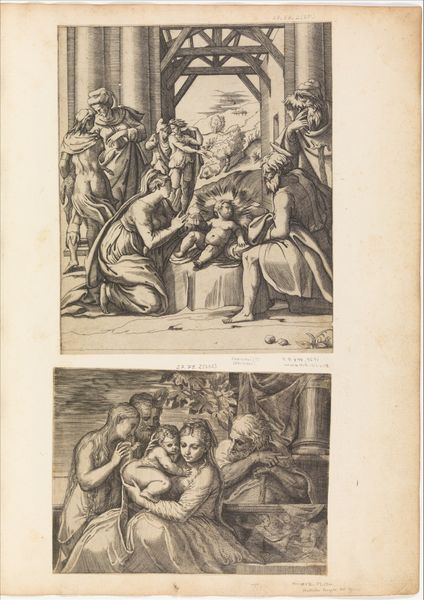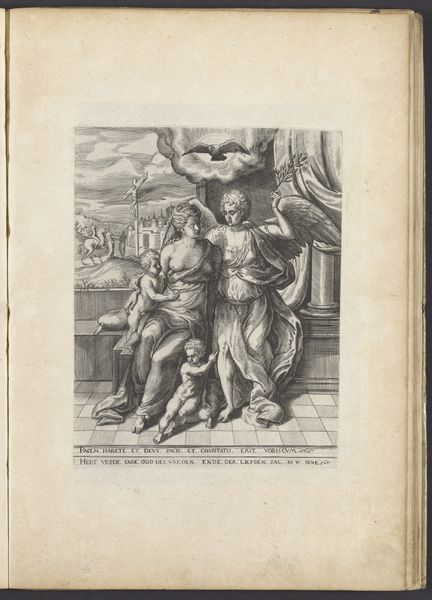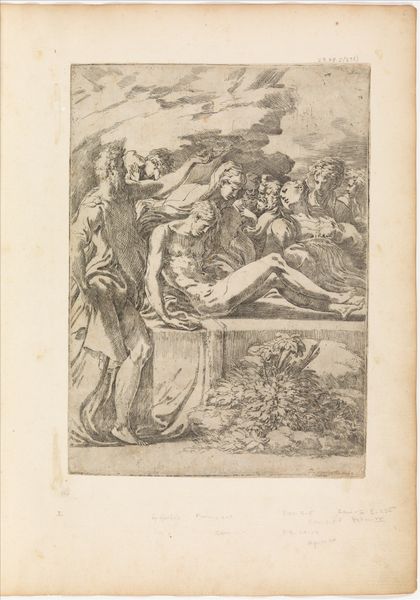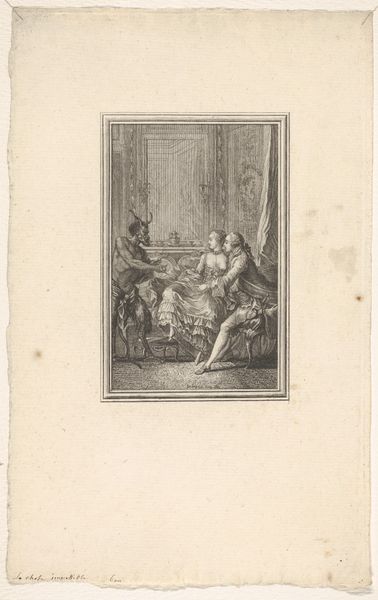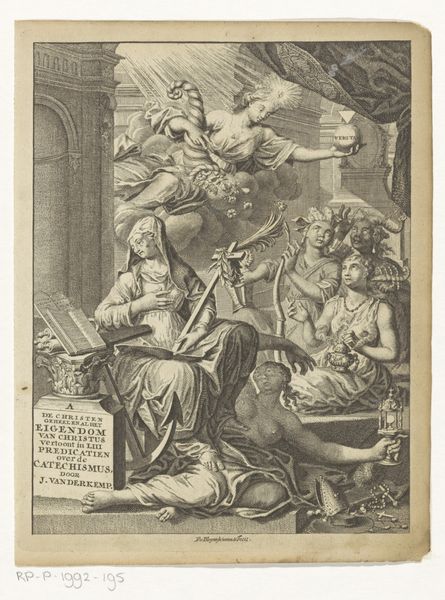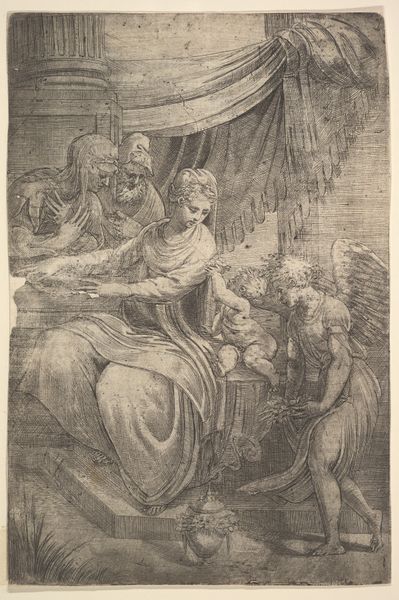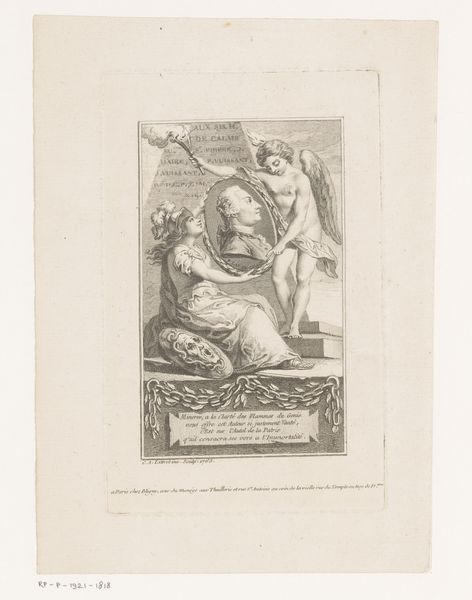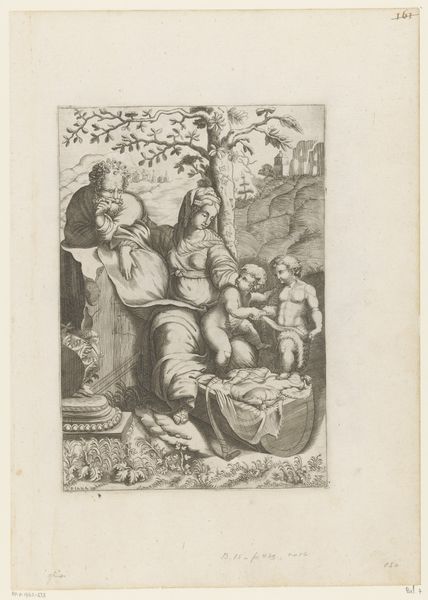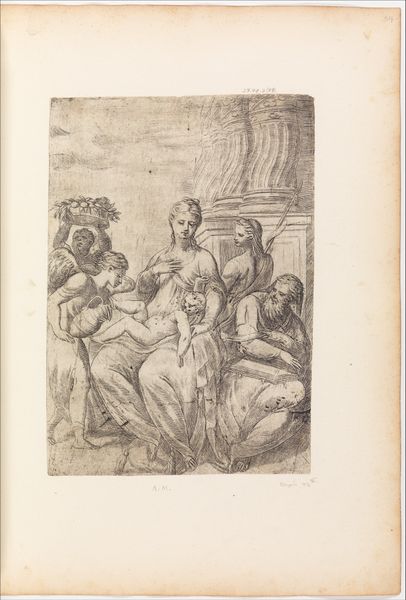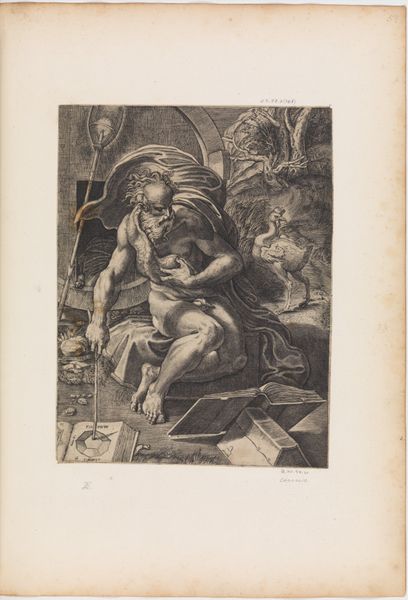
drawing, print
#
drawing
# print
#
figuration
#
history-painting
#
italian-renaissance
#
angel
Copyright: Public Domain
Editor: This is Andrea Schiavone’s "Holy Family with Angel," dating somewhere between 1510 and 1563. It’s a print, and the mood seems rather melancholic despite the religious subject matter. There’s this pervasive sense of muted drama, don't you think? What’s your take on why Schiavone chose this somber tone for such a traditionally joyful scene? Curator: That’s an astute observation. I think examining the print's social and historical context can offer some clues. Consider how prints functioned during the Renaissance. They weren't merely decorative objects but vital tools for disseminating ideas and, importantly, artistic styles. Schiavone, though inspired by masters like Parmigianino and Titian, wasn't simply copying. Editor: So, how did Schiavone use this medium to contribute his unique viewpoint? Curator: The intentional ambiguity in the work and its somber presentation might challenge the idealized visions of the Holy Family prevalent at the time. Consider the angel's slightly awkward posture, the somewhat distracted gaze of Mary, and the presence of older figures looming at the edge. These could signal a subtle commentary on the complexities and burdens inherent in religious iconography, questioning the institutional authority of the church. Editor: It’s a subtle rebellion, in a way, using the established religious theme as a canvas to question power dynamics within society at the time, maybe to democratize religion? Curator: Precisely! He exploits the inherent contradictions, creating something accessible through its reproducible format yet profoundly subversive. What have you discovered about his patronage and support network during this period? Editor: It's interesting to think about prints as a kind of political statement. I will look into his biography. This really opens up a different way of understanding Renaissance art beyond just the aesthetic value. Curator: Indeed! Hopefully, this enriches our appreciation of not only the piece itself, but the whole history of dissemination that helped elevate and promote the artist.
Comments
No comments
Be the first to comment and join the conversation on the ultimate creative platform.
